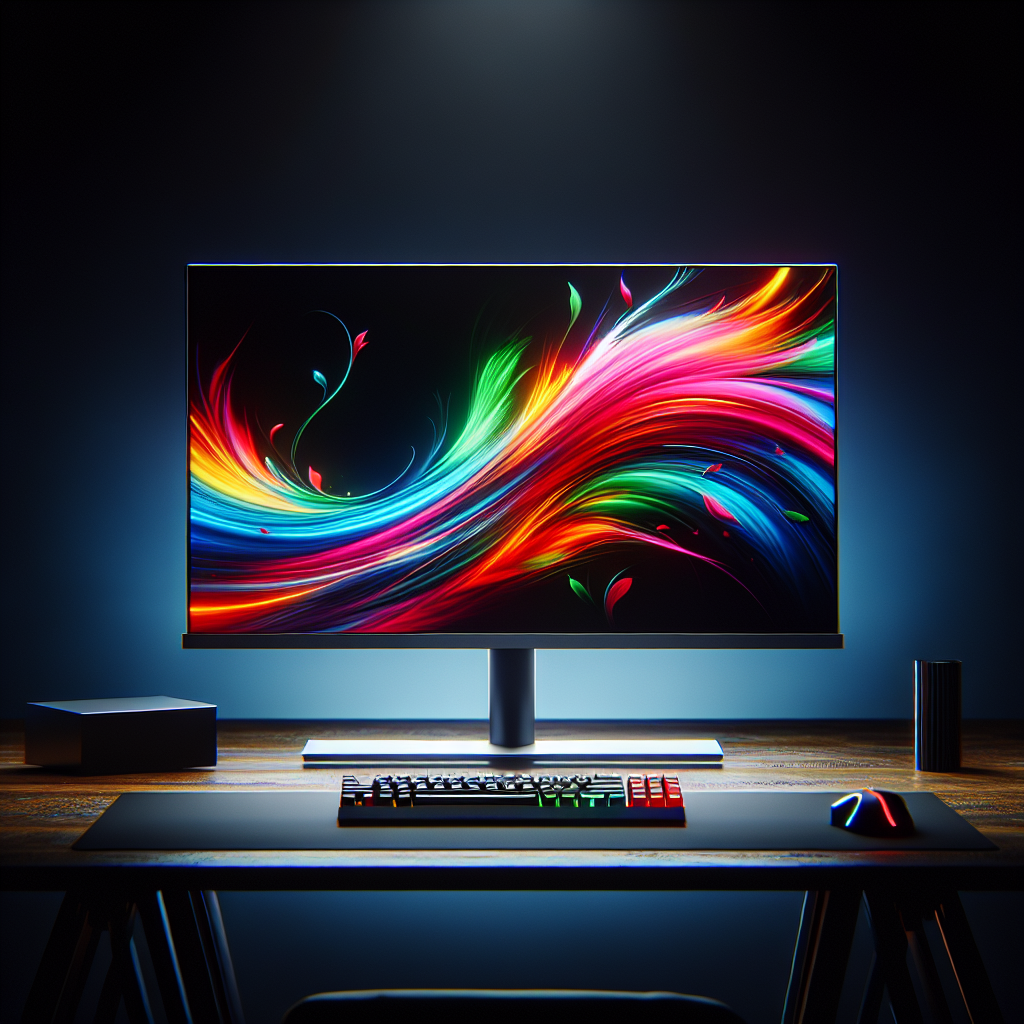
Introduction
OLED monitors with G-Sync or FreeSync technology represent a significant leap in display technology, catering to gamers and professionals alike who seek superior visual experiences. This article delves into the functionalities, benefits, and technical aspects of OLED monitors equipped with these advanced synchronization technologies.
What is an OLED Monitor?
OLED stands for Organic Light-Emitting Diode. Unlike traditional LCD monitors, which require a backlight, OLED monitors use organic compounds that emit light when an electric current is applied. This results in several key advantages:
- Superior Contrast Ratio: OLED monitors can turn off individual pixels entirely, producing true blacks and an infinite contrast ratio.
- Better Color Accuracy: OLED panels typically offer richer and more accurate colors.
- Faster Response Time: OLEDs respond quicker to input changes, reducing motion blur and ghosting.
What is G-Sync Technology?
G-Sync is a proprietary technology developed by Nvidia designed to eliminate screen tearing and stuttering. By synchronizing the monitor’s refresh rate with the GPU’s frame rate, G-Sync ensures a smoother, more fluid visual experience. Key benefits include:
- Reduced Input Lag: Enhances gaming performance by minimizing delay.
- Improved Visual Quality: Prevents tearing and stuttering for seamless gameplay.
- Varying Refresh Rates: Matches the monitor’s refresh rate dynamically to the GPU’s output.
What is FreeSync Technology?
FreeSync is a technology developed by AMD that aims to achieve similar objectives as G-Sync but is an open standard, meaning it’s not locked to AMD hardware. The benefits of FreeSync include:
- Affordability: Generally more cost-effective than G-Sync monitors.
- Wider Compatibility: Works with a larger variety of GPUs.
- Smooth Gaming Experience: Reduces screen tearing and input lag.
Comparison Table: OLED, G-Sync, and FreeSync
| Feature | OLED | G-Sync | FreeSync |
|---|---|---|---|
| Developed By | Multiple Manufacturers | Nvidia | AMD |
| Backlight | None | Requires Backlight | Requires Backlight |
| Contrast Ratio | Infinite | Depends on Monitor | Depends on Monitor |
| Compatibility | Universal | Nvidia GPUs | AMD GPUs |
| Cost | Varies | Higher | Lower |
Why Choose an OLED Monitor with G-Sync or FreeSync?
Ultimate Visual Quality
When you combine the unparalleled contrast ratio and color accuracy of OLED technology with the syncing capabilities of G-Sync or FreeSync, the result is a visual experience that is both stunning and smooth. This combination is particularly beneficial for:
- Gamers: Provides a competitive edge by reducing input lag and preventing screen tearing.
- Creative Professionals: Offers accurate color reproduction crucial for graphic design, video editing, and content creation.
Enhanced Gaming Experience
The integration of G-Sync or FreeSync in OLED monitors specifically benefits gamers in the following ways:
- Fluid Gameplay: Synchronizes frame rates for seamless transitions and movements.
- Reduced Stuttering and Tearing: Maintains the integrity of graphical content.
- Lower Input Lag: Immediate response to user inputs results in a competitive gaming environment.
Versatility
These monitors are not just limited to gaming. Their superior display features make them suitable for various applications like:
- Media Consumption: Watching high-definition content with richer colors and deeper blacks.
- Professional Work: Enhances productivity in graphical applications and multimedia editing.
What to Look for When Buying an OLED Monitor with G-Sync or FreeSync?
Resolution and Size
OLED monitors come in various sizes and resolutions. The choice depends on personal needs and desk space:
- Full HD: Suitable for smaller screens and general usage.
- Quad HD: Perfect for mid-sized monitors, offering better detail.
- 4K: Ideal for larger screens and professional work requiring high detail.
Refresh Rate
A higher refresh rate means smoother visuals. When paired with G-Sync or FreeSync, the refresh rate becomes even more crucial:
- 60Hz: Adequate for general use.
- 120Hz or 144Hz: Great for gaming and faster-paced content.
- 240Hz and above: Best for competitive gaming and eSports.
Connectivity Options
Ensure your monitor has the necessary connectivity options for your setup. Common ports include:
- HDMI: Common for most devices.
- DisplayPort: Often used for higher refresh rates and resolutions.
- USB-C: Offers versatility and can carry data, video, and power.
Top Models to Consider
Several top manufacturers produce OLED monitors with G-Sync and FreeSync technology. Here are a few models worth considering:
- LG OLED48CXPUB: A 48-inch 4K monitor with stunning HDR and FreeSync support.
- Acer Predator X27: Known for its 4K resolution, 144Hz refresh rate, and G-Sync technology.
- Dell Alienware AW5520QF: A 55-inch OLED monitor offering 4K resolution and FreeSync.
Conclusion
Choosing an OLED monitor with G-Sync or FreeSync technology provides an unparalleled visual experience, whether for gaming, professional work, or general use. By understanding the benefits and features of these technologies, you can make an informed decision to enhance your visual experience. Investing in such a monitor not only improves your current setup but also future-proofs your display technology for years to come.
